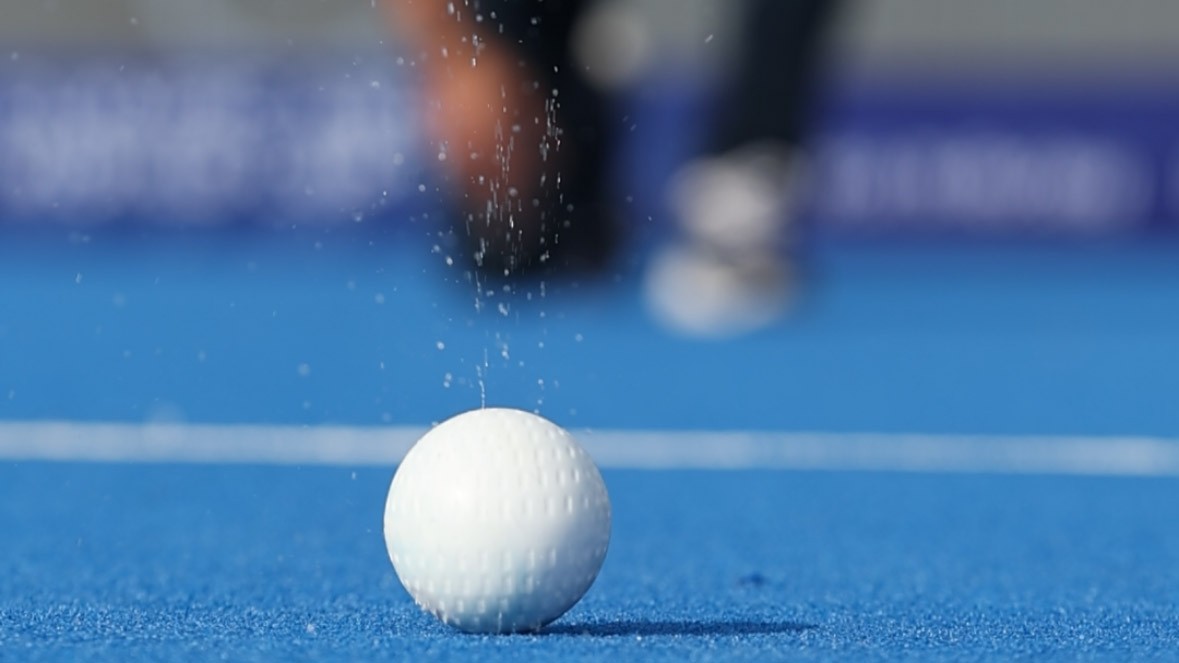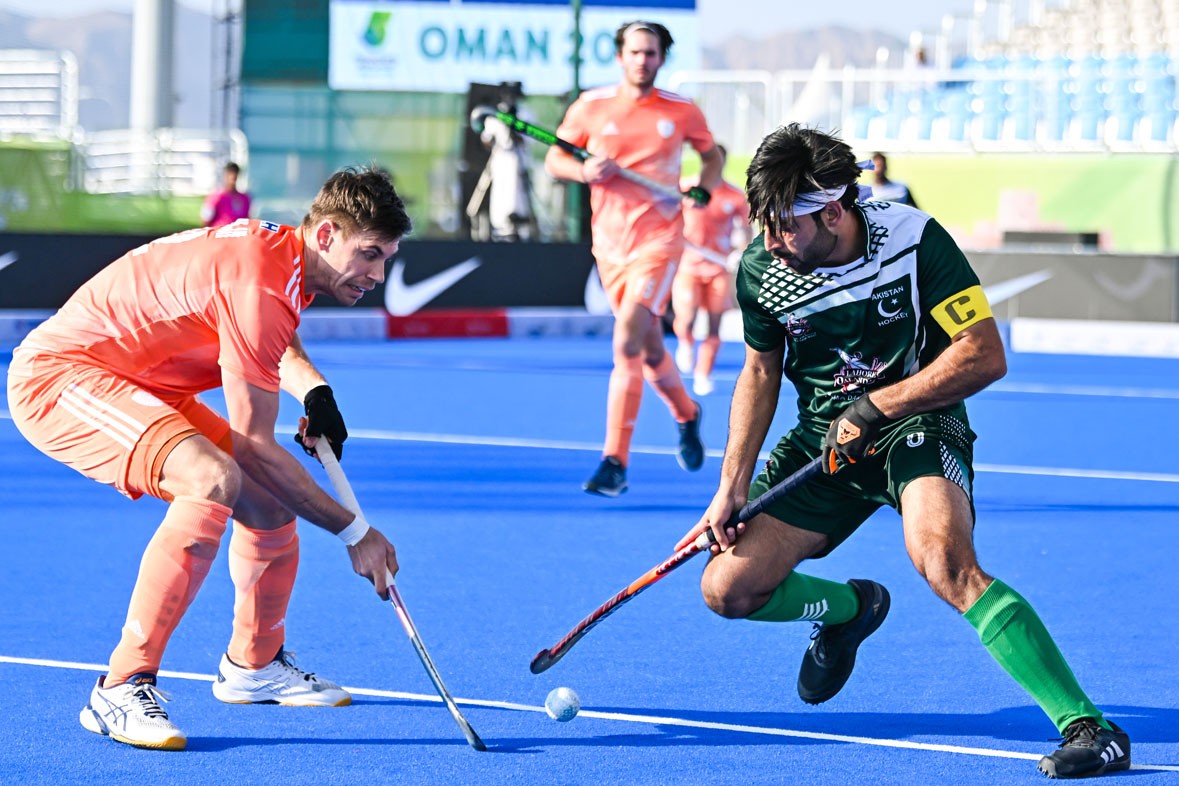
Professional hockey fields require extensive wetting. Millions of litres of water are used annually to irrigate one field, making the sport expensive, unsustainable and inaccessible. That's why the international field hockey federation FIH aims to switch to dry fields as soon as possible.
For the layman: outdoor field hockey is usually played on artificial turf fields. The crème de la crème are water fields, where water is sprayed on the artificial turf. The benefits? The ball rolls faster and more consistently, and players make smooth slidings. The downside? The massive water consumption.
But how could the hockey ball move identically on a dry field? Professor Dagmar D'hooge and his team from the Faculty of Engineering and Architecture answer that question with their invention: the Rewetta ball.
Solution for sky-high water consumption
One water field requires up to 15,000 litres of water per spraying session. This equals millions of litres annually or nearly 5 Olympic-sized swimming pools. And an expensive sprinkler system on top of it. In countries with extreme drought, that makes the sport inaccessible. Moreover, such water consumption is not sustainable in a world of climate change and drinking water scarcity.
Professor Dagmar D'hooge of the Department of Materials, Textiles and Chemical Engineering (MaTCh) rose to the challenge of making field hockey more sustainable. He put together a multidisciplinary team with Professor Ludwig Cardon, Stijn Rambour and Mustafa Erkoç to concoct a solution.
Conceived in 16 minutes: wet ball is the key
"It quickly became clear that we didn't have to tackle the artificial turf but the ball itself," Dagmar D'hooge explains. "It took exactly 16 minutes to come up with the concept. A lot of measuring, testing and hundreds of prototypes later we landed on the Rewetta ball."
The name gives away the principle: the ball contains a self-wetting mechanism. Instead of extensively watering the entire field, you briefly submerge the ball in water before use. When there is friction with the pitch or interaction with the stick, the ball releases water.
The result is spectacular. There is no more need for a watered hockey field: the ball rolls smoothly and consistently across a dry pitch and barely bounces. Moreover, the ball can handle many conditions, from high temperatures to rainy surfaces.
Away with expensive sprinkler systems and sky-high water consumption. And even better: the Rewetta ball is sustainable in all aspects: "We aimed for a circular product. Our ball is completely recyclable."

De Rewetta-bal werd voor het eerst officieel gebruikt op het FIH Wereldkampioenschap Hockey5s in Oman.
First field test: hockey world reactions are positive
The Rewetta ball can count on the enthusiasm of professional players and coaches. "The players' feedback is essential. We developed our product in cooperation with the FIH and hockey players. The highlight of the development was the first official tournament on dry pitches played with our ball; the FIH World Hockey5s Championship in Oman."
Afterwards, the hockey federation was formal: "The problem of the ball is solved. We can now move on to other elements for a multicomponent solution for dry hockey."
"We do nice things at Ghent University"
The Rewetta ball represents a huge revolution for hockey. "Since the World Championships, I realise that we have invented a global product. Research is often invisible for a long time, but we are tackling a real social problem. I am proud to see how much passion this brings to hockey players. We really do nice things at Ghent University!", concludes Professor D'hooge.
Spin-off MakinH
To commercialise the Rewetta ball, the team founded the spin-off MakinH with the support of TechTransfer. "The spin-off is currently offering the balls for both Hockey5s and Hockey11. Clubs with interest can definitely contact us."
Read also
Ghent University researchers support Olympic track cyclists: optimal performance thanks to sensors and AI
If the Belgian track cyclists win a medal at the upcoming Olympic Games, it will not only be the result of top performances but also of top research. In the Flemish Cycling Centre Eddy Merckx, a stone's throw from the Watersportbaan, a group of researchers from the IDLab of UGent-imec supports our track cyclists with the help of artificial intelligence (AI).
Ghent-based DoCoLab helps to control doping at the Olympic Games
The doping controls at the upcoming Olympic and Paralympic Games will again have a Ghent connection. The doping control lab of Ghent University, DoCoLab for short, is sending a team of researchers to Paris to help check many thousands of samples. Peter Van Eenoo, head of the lab, professor and cycling fan, will be part of that team: "We won't have lots of free time, but I do hope to catch some of the cycling (laughs)."
Why sports apps can actually be demotivating
They are already well established in elite sports, but amateur athletes are also increasingly using technology to improve their sports performance or prevent injuries. Sports technology is everywhere it seems, but there are pitfalls.
Why is doping not allowed at the Olympics in Tokyo?
The Doping Control Lab at Ghent University is an international authority in the field of doping research. The lab will be sending a delegation to the Olympics in Tokyo this year, just like it did during previous editions. But why is this necessary? Why aren’t athletes free to choose what they do with their own body? DoCoLab’s manager, prof. Peter Van Eenoo, sheds some light on these questions.



